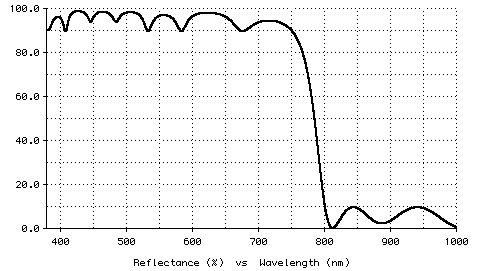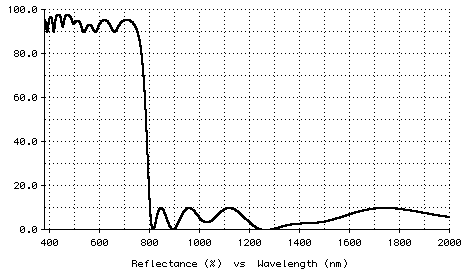Cold Mirror
> 90% reflectance for 380-750 nm
< 10% reflectance for 800-1000 nm
In TFCalc it is very easy to enter these requirements using continuous targets. We will use
TFCalc's needle/tunneling optimization to design the coating from "scratch". That is, we will
begin the design process with a single thin layer of TiO2 and allow TFCalc to increase the thickness
and number of layers in the design. TFCalc finds a design in a few minutes. After we
remove two thin layers and reoptimize the design, an acceptable 21-layer design is found:

The prime difficulty with this type of coating is the design of the reflector. After an acceptable reflector has been designed, it is usually easy to extend the transmitting region. For instance, the plot below shows the 21-layer design extended to 2000 nm.

TIO2 44.21 33.76 SIO2 102.57 124.04 TIO2 43.97 28.39 SIO2 73.13 66.36 TIO2 42.56 51.05 SIO2 82.52 86.41 TIO2 48.92 51.97 SIO2 87.18 88.77 TIO2 46.48 39.55 SIO2 66.56 70.41 TIO2 36.16 36.85 SIO2 162.54 162.37 TIO2 53.07 53.15 SIO2 97.19 102.08 TIO2 79.13 81.48 SIO2 102.19 99.64 TIO2 67.77 61.86 SIO2 128.87 137.38 TIO2 53.24 51.30 SIO2 158.61 191.13 TIO2 34.40 19.03